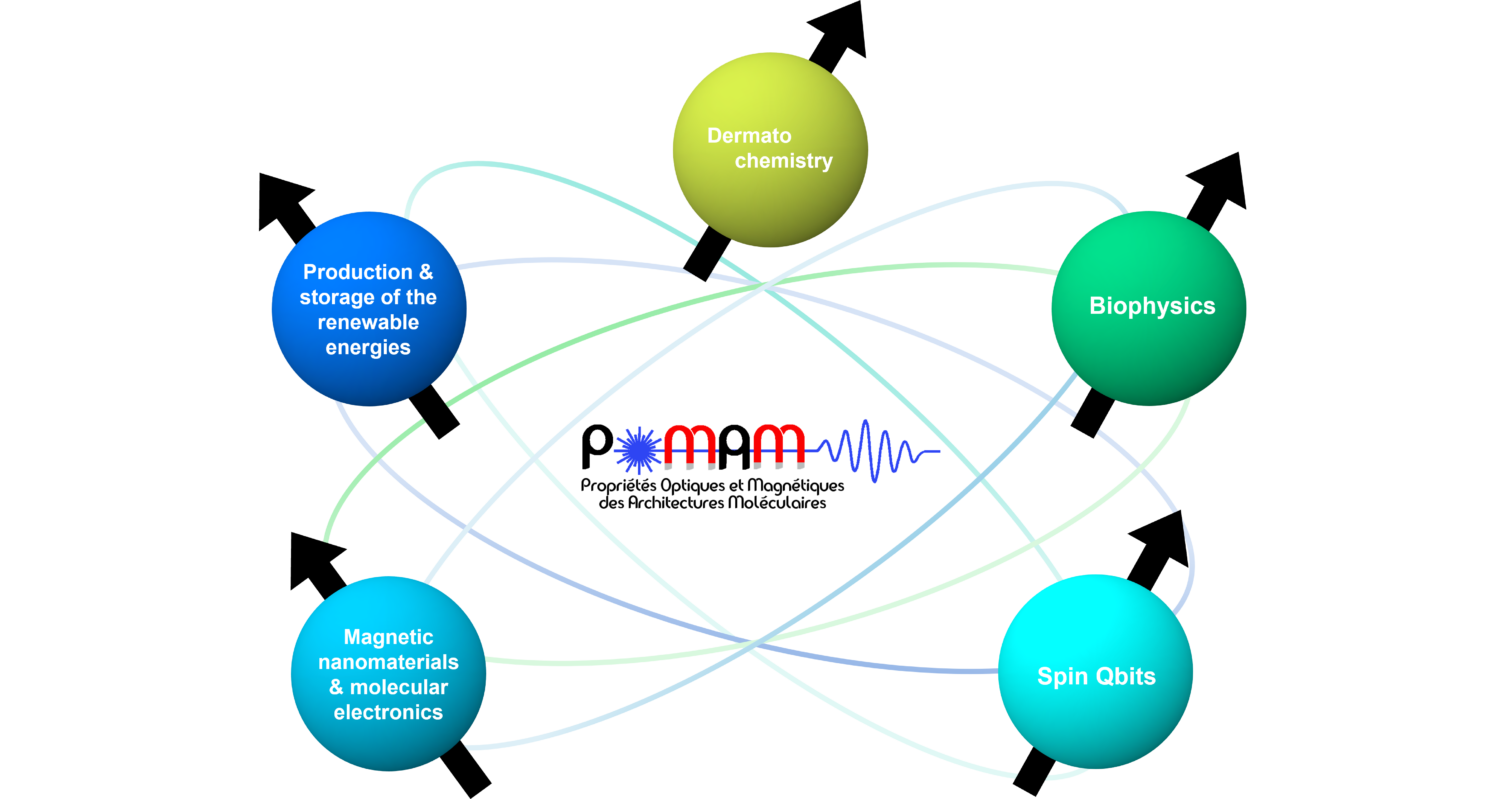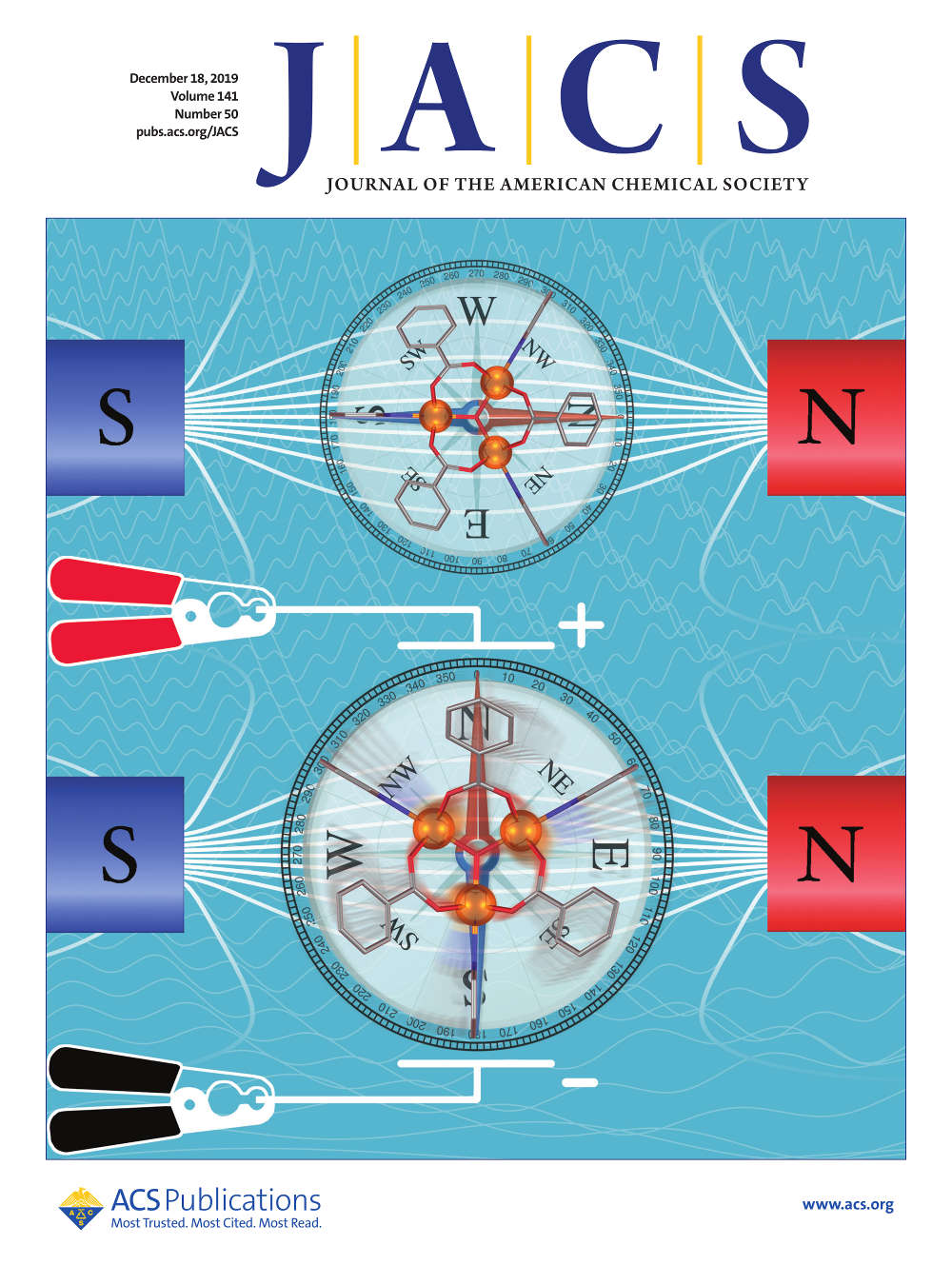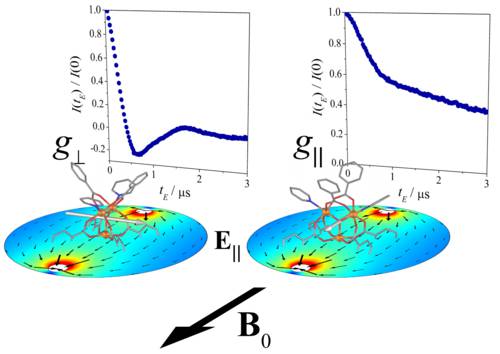Polyanisotropic magnetoelectric coupling in an electrically controlled molecular spin qubit.
Robert J, Parizel N, Turek P and Boudalis A K.
Journal of the American Chemical Society, 2019.
Abstract:
Two molecular spin triangles are studied with pulsed Electron Paramagnetic Resonance (EPR) spectroscopy to assess their magnetoelectric (ME) couplings. [Fe3O(PhCOO)6(py)3]ClO4·py (Fe3) is characterized by strong Dzyaloshinskii-Moriya interactions (DMI) which induce important magnetoanisotropy, whereas the DMI in [Cr3O(PhCOO)6(py)3]ClO4·0.5py (Cr3) is 1-2 orders of magnitude weaker. By monitoring the Hahn echos under the influence of electric pulses, Fe3 is observed to demonstrate a clear ME effect whose intensity shows an unprecedented dependence on the molecular orientation within the electric field E (electroanisotropy) and on the relative orientations of the molecular z-axis, the Zeeman field B0 and E (magnetoelectric anisotropy). In addition, the ME effect in Fe3 exhibits complex dynamics characterized by saturation and oscillatory effects. On the other hand, Cr3 exhibits no discernible ME effect, which correlates well with its negligible DMI.


